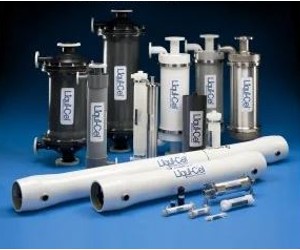 Solventum’s Liqui-Cel membrane contactors deliver precise gas removal for any flow rate
Solventum’s Liqui-Cel membrane contactors deliver precise gas removal for any flow rate
May 16, 2025 REDWIRE is news you can use from leading suppliers. Powered by FRASERS.
Posted by John Brooks
We’re a team of fluid handling experts dedicated to keeping our world flowing by connecting people, and solutions. Since... Read more
Subscribe
Free REDWIRE e-newsletter

Liqui-Cel membrane contactors by Solventum
Solventum solutions are available through John Brooks, including the manufacturer’s line of Liqui-Cel membrane contactors. Often used for gas transfer with water or liquids with similar surface tensions, these membrane contactors use a patented radial flow design and come in a wide range of sizes for various flow rates.
Liqui-Cel membrane contactors are commonly employed to remove oxygen and carbon dioxide from water, and they are perfect for flow rates from 0.1 to 91 cubic metres per hour.
Membrane contactors with straightforward operation
Piping multiple Liqui-Cel contactors can easily handle larger flow rates in parallel, while SuperPhobic models are the suitable option for low surface tension liquids like digital ink, coatings, or developer solutions. For smaller flow rates, John Brooks recommends the MiniModule and MicroModule units. The Liqui-Cel brand has displaced the vacuum tower, forced draft deaerator, and oxygen scavengers. Users simply add contactors according to the required process flow rates.
The function of these membrane contactors is straightforward. One side of each model has an inlet in which liquid enters with dissolved gas; the fluid exits from the outlet at the other end. An optional Sweep Gas outlet emits carbon dioxide or nitrogen, and a vacuum outlet is also possible. Each unit is packed with thousands of hollow fibres, which create a huge surface area for fluid-gas contact. Gas-saturated fluids flow radially over on the outside of the membrane hollow filters.
The centre baffle forces the liquid to flow radially over the fibres to maximize membrane surface-area contact. The user can apply vacuum and/or sweep gas to the inside of the hollow fibre membrane in a counter-current flow direction to offset the equilibrium between the fluid and gas phase. The high contact area and unique internal design results in highly efficient removal of oxygen and carbon dioxide. The entire process requires no chemicals. Gases in the atmosphere dissolve until equilibrium is achieved.
For a closer look at how these membrane contactors work, check out this video:
To learn more, contact John Brooks.
Share
Posted by John Brooks
We’re a team of fluid handling experts dedicated to keeping our world flowing by connecting people, and solutions. Since... Read more
